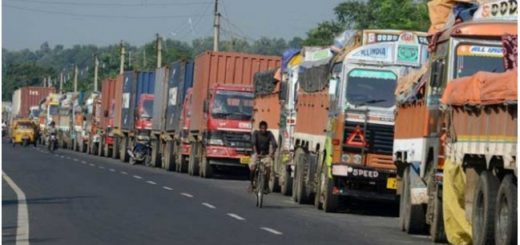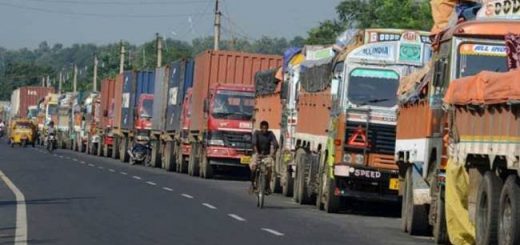Large HCVs Demand to Grow 10% in 3 years
Logistic companies are shifting to larger warehouses, and other factors such as GST, stricter overloading norms, and better fuel efficiency are aiding the shift to higher-tonnage HCVs.
The logistics industry, mainly driven by the Goods and Services Tax (GST), will keep the demand for large heavy commercial vehicles (HCVs) buoyant, with their tonnage1 growth expected to be at 10% over the next 2-3 years, compared to a 3-4% growth foreseen for their lighter counterparts.
As logistics hubs, or regional warehouses, get larger following the implementation of GST, average payloads will increase. Hubs cater to ‘spokes’, or local warehouses.
LHCVs comprise more than 50% of all CVs sold by tonnage. Before GST, central state tax was levied if the state in which the final sale happened was different from where the warehousing or manufacturing happened. Therefore, to achieve tax efficiency, large companies, typically maintained a warehouse in almost every state.
After GST, companies are moving towards larger warehouses with their location driven by logistical efficiencies rather than tax concerns. Indeed, many are re-designing their supply chains, which will reduce warehouses by up to 40% – from more than 30 to about 18-20 over the next few years.
Then, there are factors such as stricter overloading norms, and better fuel efficiency, which are also aiding the shift to higher-tonnage CVs. Operating costs per tonne are lower for larger vehicles at high utilization levels, owing to better fuel efficiencies and lower fixed costs. These factors have driven the growth of large HCVs over the last 3 years.
Moreover, integrated logistics players are gaining traction, which is also contributing to the shift. In the first 8 months of this fiscal, large HCVs with gross vehicle weight over 25 tonnes saw growth of more than 45% in tonnage, compared with a decline of more than 10% for their lighter counterparts.
Binaifer Jehani, director, of Crisil Research, said: “As hubs get bigger, and more concentrated for a few industries, preference will shift to much higher-tonnage HCVs (towards 37T multi-axle vehicles and higher-tonnage tractor-trailers). Also, new product offerings by OEMs in the higher tonnage intermediate commercial vehicles (ICVs) segment will continue to gain traction along the spoke routes.”
The shift will not play out for industries, where warehousing decisions are driven by a need to be closer to dealers such as pharmaceuticals.
The introduction of new models will be needed to fill the gaps that emerge – necessitating higher investment in product development.
A reduction in transit times because of GST – led by the removal of bottlenecks at checkpoints – will further improve the efficiency of logistics players and reduce the fleet size requirement. Nevertheless, improving industrial activity, and focus on infrastructure and rural economy will partly offset these downside pressures on CV sales.
Manish Gupta, director, of Crisil Ratings, said: “Players with stronger product profiles in ICVs and HCVs stand to benefit, and this will support their credit profiles, while those unable to adapt to the shift towards higher tonnages will come under stress.”
Source: https://goo.gl/DFpgSj




Recent Comments